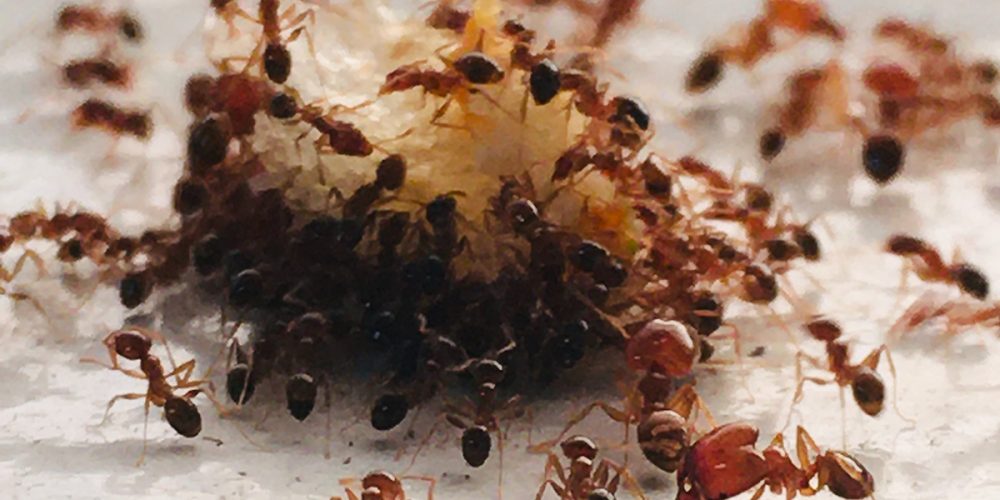Ants and termites: They’re among the most common and annoying pests for Florida residents. Both share a need for food and water, which makes your home an ideal shelter. And both can destroy your property, though termites do it much faster. Termites, as we all know, can be more destructive and hurt your property’s value. With this is mind, let’s look at the differences between the two and why it’s important to treat your home once you see the signs of their activity.
Physical differences between carpenter ants and termites
You may think you can easily tell the difference between ants and termites just by looking at them. But when you’re dealing with carpenter ants and termites, they can look very similar to the untrained eye.
First, the similarities in terms of appearance:
- Both have wings
- They’re also about the same size
The differences, however, can be subtle until you know what to look for. If you get close enough, you’ll notice that the carpenter ants’ back wings are shorter than its front wings, while termite wings are the same size.
But there’s a better way to differentiate them. Their bodies are different. Carpenter ants – and most ants — have a thicker back part of their main body broken up into 3 segments. Termites, however, have a more continuous body shape with only 2 segments, so they can be easy to identify.
Another major difference is the color. Some termites will be light or creamy in color, whereas ants have dark brown/red bodies. However, this distinction doesn’t always apply as some termites will have dark brown or black bodies. So before deciding you know what kind of pests you have, reach out to a certified J.D. Smith professional.
Different types of damage
Another thing in common with carpenter ants and termites: Both cause damage to the wood that holds up your house. Here are a few ways to identify the damage done by ants vs termites:
- Termites will create mud tubes (subterranean) that give them access to the inside of your home. You will often find these tubes on the outside walls of your house, near the foundation.
- Termites create galleries of eaten wood behind your walls (drywood) and when no room is left in those galleries from all the digested wood, they create “pop out” holes where they push their feces, also known as “frass” out of those holes.
- Paint or wall paper that looks bubbled. This is usually a sign of termites as they eat the wood behind your walls.
- Termites like to go for dry wood, while carpenter ants prefer to work with wood that is already damaged.
- Wood shavings indicate carpenter ants are creating nests (they don’t eat the wood, but push it aside) they hollow it out in order to nest inside
Control ants and termites with JD Smith
Termites and ants are best controlled by a professional pest control service. So if you see swarming insects in your home, or have damage that could be the result or ants or termites, give us a call. JD Smith Pest Control will address the termites and ants that are infesting your home. Our certified inspectors are ready to assess your situation and create a pest control plan that’s right for you.



